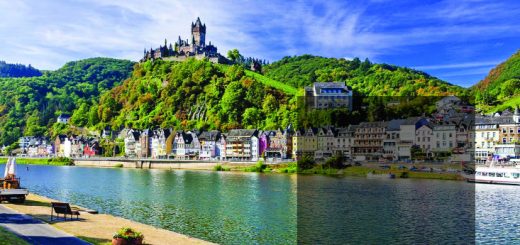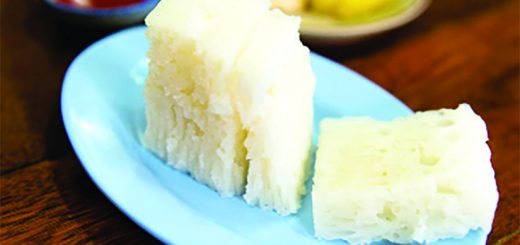The ingenious living bridges of India -Farzeen Hasan
For centuries, indigenous groups in Meghalaya of India have crafted intricate bridges from living fig trees. Now this ancient skill is making its way to European cities.
In the north-eastern Indian state of Meghalaya, just above the Sylhet division of Bangladesh, there lies a village named Tyrna. It is very similar to the other villages of Meghalaya – full of long old trees. It is a popular tourist spot, especially to the nature lovers because Tyrna has something that many don’t have – living bridges, some of them are more than hundred years old.
Tyrna hosts hundreds of living bridges. These bridges are composed of aerial roots of giant fig trees that are trightly knotted and woven together. The people of Khasi Jainta communities, who live there for centuries, made this. Now, the bridges have become a symbol of architectural beauty.
Meghalaya is a hilly area. Some of the wettest places of earth are located in Meghalaya. For example, the village Mawsynram is the world’s rainiest place. During the monsoon, heavy rainfall isolates the villages. To cross the swelling rivers, the ancestors of the villagers trained living aerial roots of the fig trees to form a bridge across flooding rivers. Surprisingly, the bridges are still performing and the local people, during the monsoon, use them frequently.
However, building such bridges is not easy and it takes more than decades to build one. First, planting of a sapling of the fig tree (Ficus elastica) in a good place along the riverbank needs to be done. Fig trees grow abundantly in the subtropical terrain of Meghalaya. The trees develop large buttressing roots and the mature trees sprout secondary aerial roots, usually after a decade, from further up. The aerial roots that have a degree of elasticity are to be joined together to form a stable structure.
The bridges of Meghalaya have been perfected over centuries. The local people intertwined aerial roots onto a bamboo or another wooden support, wheedled them across the river and finally implanted them on the opposite bank of the river. The roots shorten, thicken over time. It also produces offshoots and those were also trained over the river, intertwined with another fig tree or with branches and trunks of the same tree. Sometimes, stones were used to cover the gaps in root structures. The network of roots matures over time to bear loads. There are some bridges that can hold as many as fifty people at once.
Like any other man-made bridges, these living bridges, too, need maintenance efforts. This was done by the people living around the bridges. The maintenance work never stops, therefore, there are some bridges that are more than 600 years old. The main difference between living and man-made bridge: living root bridges grow stronger with time, self-repairing and become more robust as they age while small cement bridges can wash away and steel bridges tend to rust with rains. The cost of maintenance of living bridges? Almost nothing.
Living root bridges are environment friendly too. The trees absorb the greenhouse gas carbon dioxide over their lifetime and help stabilizing the soil that prevents landslides. Moreover, they help protect against soil erosion because the roots anchor different soil structure.
According to Salvador Lyngdoh, a local to Meghalaya and a scientist at the Biodiversity Institute of India, Fig trees play an important role in the ecosystem because moss grows on them, squirrels live in their branches, birds nest within their canopy and the support insects that help with pollination. Moreover, building bridges with fig trees also help animals to thrive in their habitat. Animals like Bark deer and clouded leopards use root bridges to move from one part of the forest to another.
Although building root bridges is not easy and it requires hilly areas with full of trees, the researchers are thinking of replicating the idea in other parts of the world. Ludwig, a scientists of Technical University of Munich is keen to learn from the architecture of the living bridges to make buildings and spaces to make the world greener. He thinks that the bridges are good examples of sustainable development that minimizes the damage and degradation of natural systems. Rather, they attempt to reverse degradation and improve the health of the ecosystem.
However, it is not an easy process because there is no specific method of building such bridges. The way of pulling the roots together and weaving them differs from builder to builder. None of the bridges look similar, Ludwig said. Besides, there is a lack of historical written information on the bridges. This is due to not having a written script of the indigenous people of Meghalaya who built the bridges.
Even though, Ludwig and his team are using scientific methods to learn more about the bridge-building techniques and takes help of the digital equipment. They map the complicated stapes of the roots and build digital skeletons of the bridges, then take photographs to construct 3D models.
Fig tree is not available in Europe, so Ludwig plans to use London Plane tree. The indigenous people of Meghalaya have incredible knowledge about trees because they live in the nature and the people of Europe are not, so the process becomes more difficult. To overcome the difficulties, Ludwig and his team are using digital tools to mimic the process and to settle on a geometry that allowed for weaving twigs together into a roof. The team constantly trims and prunes the trees to encourage them to grow to keep the trees thinner.
By integrating trees in buildings, bridges and parks to bring nature in the crowded areas, the outer wellbeing of residents in cities can be improved, according to Ludwig. It is not merely copying the bridges, rather borrowing the elements of the indigenous engineering and adopting in the urban environments.
In Meghalaya, the native’s practice of weaving root bridges helps improving the social relationships too. The building, maintaining and repairing of the bridges are done by all, which promotes community life. Also, it is an selfless act, because what they act today brings result for the next generation. This also helps to pull the community together and protect the ecosystem.
The living bridges of Meghalaya have economic impacts too. In the past, the network of bridges connected villages with nearby cities and provided a way to transport and sell betel nut and other things. Now, the tourism economy is the result of the bridges. It is one of the major tourist attractions of Meghalaya.
Tourists bring some threats too. Empty crisp packets and bottles are everywhere and what is more threatening is, the bridges overburdened when hundreds of tourist clamber for selfies. To protect the living bridges, the locals come forward with some ideas. Morningstar Khongthaw is a native of Meghalaya who has founded Living Bridge Foundation. Khongthaw and his team are creating awareness about root bridges. They also repair and maintain the old bridges as well as building new ones.
A museum and a learning center to educate tourists about living bridges is also being constructed. Different infrastructure made of fig trees like canopies and tunnels in the deep jungle, ladder-like structures etc. will be displayed on the museum.
Living bridges may be seen in Europe and other parts of the world in the near future but the technology should be adopted in the densely populated cities like Dhaka to get the benefits it provides. To enjoy the magnificent structure, you should visit Meghalaya which is a few steps away from our home.
Based on the article published on bbc.com















Recent Comments